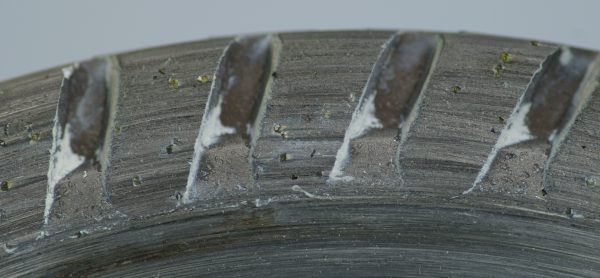BLOG
Concrete Contractors & Their Diamond Blades
by TRP Ready Mix on March 7, 2017
How Diamond Blades Make Cutting Concrete Easier
For concrete contractors, a diamond blade is absolutely necessary for cutting concrete. Diamond blades allow concrete contractors to get the job done quickly and efficiently by making the cutting much easier. Diamond blades vary in size, quality, and cost, with premium blades being recommended for frequent concrete cutting. The following is a look at diamond blades and how they cut concrete so well.
Diamond Blades
Diamond blades are made with the following components:
- A metal core steel disk that holds the diamonds on the rim;
- Sharp synthetic diamonds (or teeth) to cut through the concrete;
- A metal bond (matrix) that holds the diamonds until they wear down; and,
- A weld attaching the matrix and diamonds to the metal core.
There are also three types of diamond blades used for various types of concrete cutting:
- Segmented—the most commonly used for high-production jobs requiring fast cutting. The segments have gaps between them to efficiently disperse dust and keep the blade cool for a faster cut.
- Continuous—for precision cutting, slower than segmented, but still fast and clean with minimal chipping.
- Turbo—combines the strengths of segmented and continuous, and can be used on wet or dry concrete. Turbo blades provide precise cuts at fast speeds.
Blade Life
How often concrete contractors replace their blades depends on the quality of the blade, the type of cutting, and the frequency of use. Cheaper blades can be used for smaller cutting jobs where the blade isn’t used as much, being less likely to wear down. Concrete contractors often use premium blades since they are frequently cutting concrete. Premium diamond blades will last longer, saving concrete contractors from having to replace them as often as they would need to with lower-cost blades. With quality blades, concrete contractors will have less interruptions (for changing blades), so they can get the concrete cut quickly and more efficiently.
Working Conditions
The type of diamond blade used will also depend on the working conditions for concrete contractors, such as cutting hard or soft aggregates. A general rule of thumb is: the harder the concrete, the softer the bond needed on the blade.
Age of the concrete: Zero to eight hours old is considered “green” concrete, and requires a hard-bonded diamond blade. Concrete that is more than eight hours old is considered “cured” concrete, and requires a softer-bonded blade.
Depth of the concrete: If a deep cut is required, a bigger blade is required—i.e. the deeper the cut, the bigger the blade.
Wet or dry conditions: Some blades should not be used in wet conditions. Diamond blades are manufactured and packaged according to use, so their labels will determine if they can be used in wet or dry conditions.
There is no concrete cutting job that a diamond blade can’t handle. These blades are designed for precision, speed, and efficiency, making the jobs of concrete contractors that much better.

